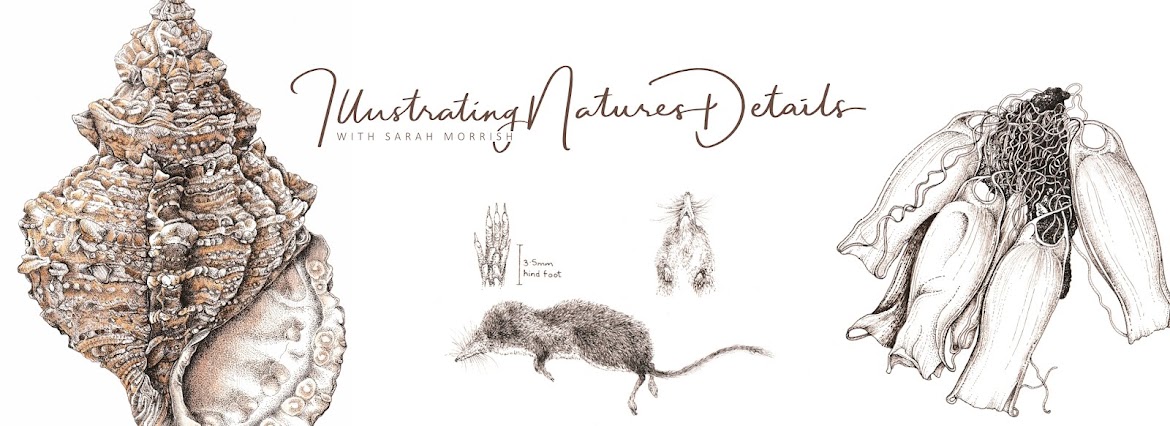The RBGE Cert in Botanical Illustration finished last Friday and I got back to good old Southampton on Saturday.
I would be lying if I said that I did not miss Edinburgh, or rather studying at the Botanics. I gained so much from being with other artists (whatever level of experience) and just to be somewhere with so much history and opportunity for inspiration and reference was really valuable.
 |
| A florilegium from 1630 |
One of the highlights for me at the end of the first week was to see two Florilegiums. One dating from the early 1600's and the other one from the present day - The Highgrove Florilegium. The latter consisted of two volumes that included illustrations of the plants and flowers found growing in the garden of Prince Charles' home in Gloucestershire. I had previously heard so much about this and had been longing to see some of the work in one form or another, and I certainly was not disappointed. The reproduction and print quality of the artwork was excellent.
 |
| Viewing a volume of the Highgrove Florilegium |
Back to the course. At the end of our first week we were given our plant to look after during the weekend and if we wanted to, to start making some preparatory measured drawings. We had 1 week to work on the final assessment piece, with the main composition being decided on the Monday.
I must admit when I heard that the plant species we were all going to have was Cyclamen Persicum, my heart sank - it is not one of my favourite plants! After the initial negative feelings I realised that we needed a plant that had plenty of subject matter, was not going to die on us during the week and also a plant that artists of any level of experience could illustrate.
We used all of the skills that we had practised and gained during the first week to complete this picture and we had a criteria to adhere to. We had to illustrate a flower and the front and back of leaves. Anything in addition was up to us. The part of the planning process that I really did enjoy was making individual drawings, tracing them and then using the tracings on the lightbox to come up with an effective and viable composition.
I have not been a fan of tracing in the past as I feel you can sometimes lose the 'crispness' of the drawing. I am an artist that likes to live dangerously and nine times out of ten I do draw my subject directly on to the watercolour paper !
I am including a few photos below, I'm afriad that there are too many to show them all, but I hope this will give you some idea of how the painting progressed.
 |
| Making a start |
 |
| Stems completed - now onto the leaves |
 |
| The leaves finished |
 |
| Cross-section and fruit |
 |
| Cross-section |
 |
| Close-up of bud |
 |
| The finished painting - Cyclamen Persicum |
As I speak the portfolio and painting are being marked in Edinburgh, so hopefully by next week I should know how I did.
And now for bat news !
I had noticed that when I returned home we had some bat droppings on patio in a small area. I wondered whether there were any bats roosting between the guttering and fascia board. There was only one thing to do - get the bat detector out !
The droppings looked like Pipistrelle droppings, so we sat out just after sunset last night with the bat detector set at around the right frequency for Common Pipistrelles. We had a few quiet passes of this species following the tree line behind our house, and then we had a really strong sound of Common Pipistrelle that must have emerged from near the place that I had originally thought they or it may have been roosting.
This morning there were not any fresh bat droppings, but as the males can be quite transient in the summer months, we may only be providing a temporary roost.
There is something quite comforting about sitting out in your own back garden under a blanket and eating chocolate whilst listening for bats - a bit different from the bat surveys I used to do !










































